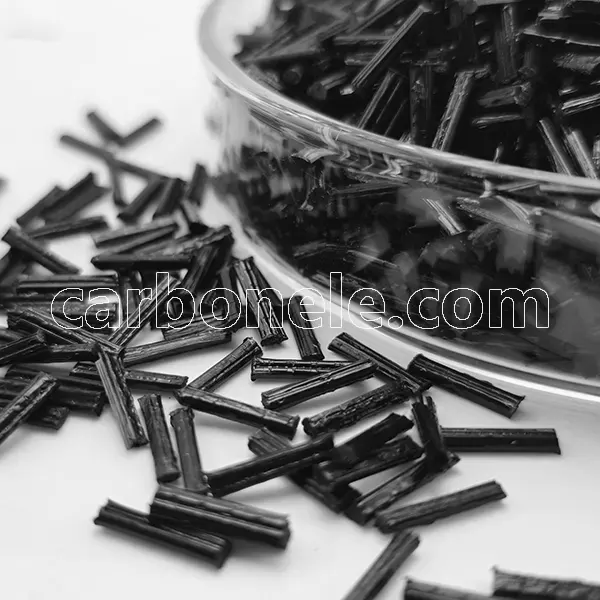Preventing Fiber Breakage In PP LCF Reinforced Composites During Processing - Carbon Fiber Compounds Manufacturer | Supplier
In the sphere of modern materials research, high performance and lightweighting are main forces promoting industrial growth. Because of their special lightweight, high strength and great stiffness characteristics, PP LCF reinforced composites are perfect for reaching this aim. Among many sectors, including automotive, aerospace, and consumer goods, these composites find expanding application.
How can PP LCF reinforced composite fibre dispersion be uniform?
Achieving consistent fibre distribution inside the polypropylene matrix presents one of the key difficulties in making PP LCF reinforced composites. Incorrect material characteristics and performance can result from unequal fibre dispersion. Modern mixing methods and tools are required in order to solve this issue. For instance, Carbonele has created patented technology guaranteeing a more homogeneous combination of polymers and fibres. These techniques improve the whole quality and consistency of the composite by equally distributing fibres throughout the matrix utilising high shear mixing and regulated processing conditions.
How could fibre breakage in PP LCF reinforced composites be avoided during processing?
Because it lowers the reinforcing effect of long carbon fibres, fibre breakage during processing is a main issue. Manufacturers must thus maximise their processing methods to reduce mechanical strain on the fibres. Careful management of extrusion and injection moulding parameters including temperature, pressure, and shear rate will help to accomplish this. Furthermore lessening breakage can be achieved by employing mild mixing techniques and tools made especially to manage long fibres. Leading developers and adopters of these cutting-edge processing methods to preserve fibre integrity and raise composite performance are companies such as Carbonele.
Ensure strong interfacial bonding
The interfacial bonding between the polypropylene matrix and the carbon fibres determines mostly the strength and performance of PP LCF reinforced composites. Excellent load transfer from the matrix to the fibres guaranteed by strong interfacial bonding improves the mechanical qualities of the composite. Adhesion between the fibre and matrix can be enhanced by surface treatments of carbon fibres including plasma treatment or coupling agent application. Stronger, more durable composite results from these treatments changing the fibre surface to improve its polymer compatibility. To improve the interfacial bonding of his composites, Carbonele has invented creative surface treatments.
Methods for raising impact resistance?
PP LCF reinforced composites offer great stiffness and strength, however occasionally their impact resistance may be less than intended. Manufacturers can investigate many approaches to handle this. To maximise fibre length and orientation so as to absorb and distribute impact energy, Furthermore improving the impact resistance of the composite is changing the polypropylene matrix with toughening agents such elastometers or other polymer additions. One can strike a compromise between stiffness, strength, and impact resistance by precisely arranging the composite’s components and construction. To satisfy the strict needs of different applications, Carbonele’s R&D staff is continuously striving to raise the impact performance of its composites.
How may the compatibility issue be resolved?
The whole performance of the composite depends on the polypropylene matrix and the long carbon fibres working together. Reduced mechanical characteristics, weak interfacial bonding, and poor adhesion can all follow from incompatibility. Compatibilizers, an additive that improves the interface between the matrix and the fibre, let manufacturers solve this issue. These compatibilizers can be applied during processing to enhance fibre dispersion and adhesion or grafted onto the polymer chain. Furthermore improving compatibility is the selection of the appropriate polypropylene grade and optimising of processing conditions. Carbonele guarantees outstanding performance and dependability from its composites by means of innovative compatibilization technology.
Carbonele states
Great promise exists for PP LCF reinforced composites in many different high-performance uses. Maximising their advantages depends on addressing problems including obtaining uniform fibre distribution, preventing fibre breakage, guaranteeing strong interfacial bonding, enhancing impact resistance, and resolving compatibility concerns, though.
Companies like Carbonele are setting the standard in maximising these composites by using modern processing processes, creative surface treatments, and compatibilizers. Through constant improvement of these techniques, they are stretching the boundaries of PP LCF reinforced composites and opening the path for their larger use in several sectors.
Previous News
5 common types of high-performance fiber compos...Next News
Carbon Xiamen New Material Co., Ltd. Shines at ...
Feature Product
-
PA12 LCF30 for Drone Fuselages & Wings
What do you know about PA12 LCF30? PA12 ...
-
Competitive Price PA6 LCF30 Composites
What’s it? PA6 LCF30, which stands...
-
ABS CF10 Compound ABS 10%CF Thermoplastic Compo...
What’s ABS CF10? ABS CF10 refers t...










